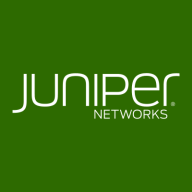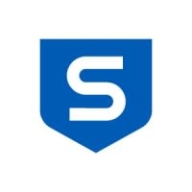


Juniper vSRX and Sophos XGS are leading firewall solutions in the cybersecurity industry. Sophos XGS seems to have the upper hand due to its comprehensive features and robust performance.
Features: Juniper vSRX users value its flexibility, integration with other systems, and advanced threat protection. Its fast data throughput is a highlight. Sophos XGS is praised for its deep packet inspection, synchronized security capabilities, and rich feature set, offering superior feature breadth and depth compared to Juniper vSRX.
Room for Improvement: Juniper vSRX users indicate the need for better reporting tools, more detailed analytics, and mention occasional performance issues under heavy load. Sophos XGS users suggest improvements in the stability of certain updates and a more intuitive configuration process, highlighting fewer pressing performance-related concerns compared to Juniper vSRX.
Ease of Deployment and Customer Service: Juniper vSRX is highlighted for its straightforward deployment and responsive customer service. Users find the deployment process user-friendly with accessible support. Sophos XGS has a more complex setup process but offers comprehensive deployment assistance and proactive customer service. Juniper vSRX edges out in ease of deployment, though both provide strong customer service.
Pricing and ROI: Juniper vSRX has favorable setup costs and delivers a good return on investment as reported by users. Sophos XGS, while having higher initial costs, is seen as worth the investment due to its extensive feature set. Users find both products justify their costs, with Sophos XGS perceived as offering greater long-term value.
Clients are now comfortable and not wasting productive hours on IT support.
We have experienced a positive return on investment by utilizing Fortinet's products.
There's definitely an ROI. Having a centralized way of managing and applying policies across the entire organization always helps.
The costs have increased with Sophos XGS in the last few years, with license prices going up by 30%, doubling from $2,500 to about $5,000, which is a big challenge for us.
He explained that it required a command line configuration, as it couldn't be done through the graphical user interface.
I would rate their support for FortiGate a nine out of ten.
They offer very accurate solutions.
I would rate their support a ten out of ten.
Any issues are quickly addressed by their support team, which is not common among all OEM manufacturers.
The response time from Sophos technical support can be slow in most cases, which can be challenging.
Technical support from Sophos is always available.
They scale up really well from smaller models like the FortiGate 40 and 50 to bigger sites with the FortiGate 100 for more throughput - up to enterprise datacenters.
The variation comes in terms of the interfaces and throughputs, but from a security perspective, you get the same benefit, irrespective of whether you have an entry-level unit or an enterprise.
You can choose a cheaper model if you only have 20-30 users, but you will need to spend more money for a FortiGate solution that covers 5,000.
Juniper vSRX is a highly scalable solution, and I would rate its scalability a nine out of ten.
I can change what I want easily without interfering with other services or routines.
I would rate its scalability seven out of ten since modules can be added.
Improper handling of these can lead to a memory surge, a well-known bug that can cause the entire system to freeze.
It is less stable than Palo Alto Networks and Check Point firewalls because there are lots of bugs in the latest firmware.
We have not had any problems with the operating systems or maintenance of subscriptions.
It is rated at nine out of ten for stability and is very reliable.
Sophos XGS is stable now, and I would rate its stability as a ten out of ten.
When Sophos introduced firmware version twenty, there was a bug in DCC.
If I have put 10 GBPS of throughput on a firewall and I enable all of these features available, such as IPS or UTM functionalities, the throughput comes down to 1 GBPS.
By providing an integrated solution, users would have access to all features and functionalities within a single window, eliminating the need to navigate through multiple windows.
Investing in a solution that can accommodate such growth would be more cost-effective than repeatedly purchasing new hardware.
I would suggest improving the pricing, particularly the licensing model.
It would be beneficial if Sophos XGS offered an end-to-end solution with competitive pricing.
After version 18.5, creating a NAT rule has become more complex, requiring the creation of a separate policy and an additional component.
I have experienced multiple hardware complaints, particularly during firmware updates that sometimes cause crashes.
Secure SD-WAN is free of charge.
The most expensive part is the renewal of the license subscription.
FortiGate is priced lower than Palo Alto.
The pricing is competitive, being neither the most expensive nor the cheapest option.
The last instance I purchased was for three years, around $3,700 for SDG 125.
pricing is rated eight out of ten, indicating that it may be relatively expensive.
Sophos XGS is quite expensive, potentially a nine out of ten in terms of cost.
The firewall, IPS, and VPN functions are the most valuable features.
FortiGate provides solid protection against viruses, malware, and other threats.
Within the same dashboard, you get to see the security profiles, the type of traffic that's passing through, the top applications that are being consumed, etc.
These features are crucial for our network security.
It's able to detect cloud applications like Zoom or Microsoft Teams and allows traffic shaping based on the application.
I find it much easier than others, like FortiGate, which is complicated in its installation, but Sophos XGS is really easy.
The threat detection capabilities are effective, especially against CNC and certain viruses not coming through emails.



Fortinet FortiGate offers comprehensive network security and firewall protection across multiple locations. It effectively manages data traffic and secures environments with features like VPN, intrusion prevention, and UTM controls.
Organizations rely on Fortinet FortiGate for its robust integration with advanced security policies, ensuring significant protection for enterprises, cloud environments, and educational sectors. It facilitates network segmentation, application-level security, and authentication management, securing communication within and between locations such as branches and data centers. Its efficient SD-WAN and UTM features enable streamlined data management and enhanced threat protection capabilities. Users appreciate its centralized management, facilitating seamless operations across diverse environments.
What are the key features of Fortinet FortiGate?
What benefits should users expect from Fortinet FortiGate?
Fortinet FortiGate is crucial in sectors like education, offering robust networks for secure data flow between campuses and facilitating remote learning. In enterprise environments, it allows efficient management of application traffic and security across multiple branches, while in the cloud, it seamlessly integrates with diverse platforms to enhance security infrastructure.
Juniper vSRX is a virtualized security platform that provides advanced threat protection for virtualized and cloud environments. It offers a comprehensive set of security features, including firewall, VPN, intrusion prevention system (IPS), and unified threat management (UTM).
With its scalable architecture, the vSRX can be easily deployed and managed across multiple virtual machines, making it ideal for organizations with dynamic and distributed networks. It also supports high-performance data processing, ensuring minimal impact on network performance.
vSRX is designed to integrate seamlessly with Juniper's broader security ecosystem, enabling centralized management and visibility across the entire network.
Sophos XGS is a comprehensive network security solution designed to protect organizations from advanced threats. It combines next-generation firewall capabilities with advanced threat protection, web filtering, and application control.
XGS has powerful deep learning technology and can detect and block even the most sophisticated malware and ransomware attacks. It also offers granular control over web access, allowing organizations to enforce policies and prevent access to malicious or inappropriate websites. Additionally, XGS provides application control features, enabling organizations to manage and prioritize network traffic based on specific applications or user groups.
With its intuitive management interface and centralized reporting, XGS offers easy deployment and monitoring of network security.
We monitor all Firewalls reviews to prevent fraudulent reviews and keep review quality high. We do not post reviews by company employees or direct competitors. We validate each review for authenticity via cross-reference with LinkedIn, and personal follow-up with the reviewer when necessary.